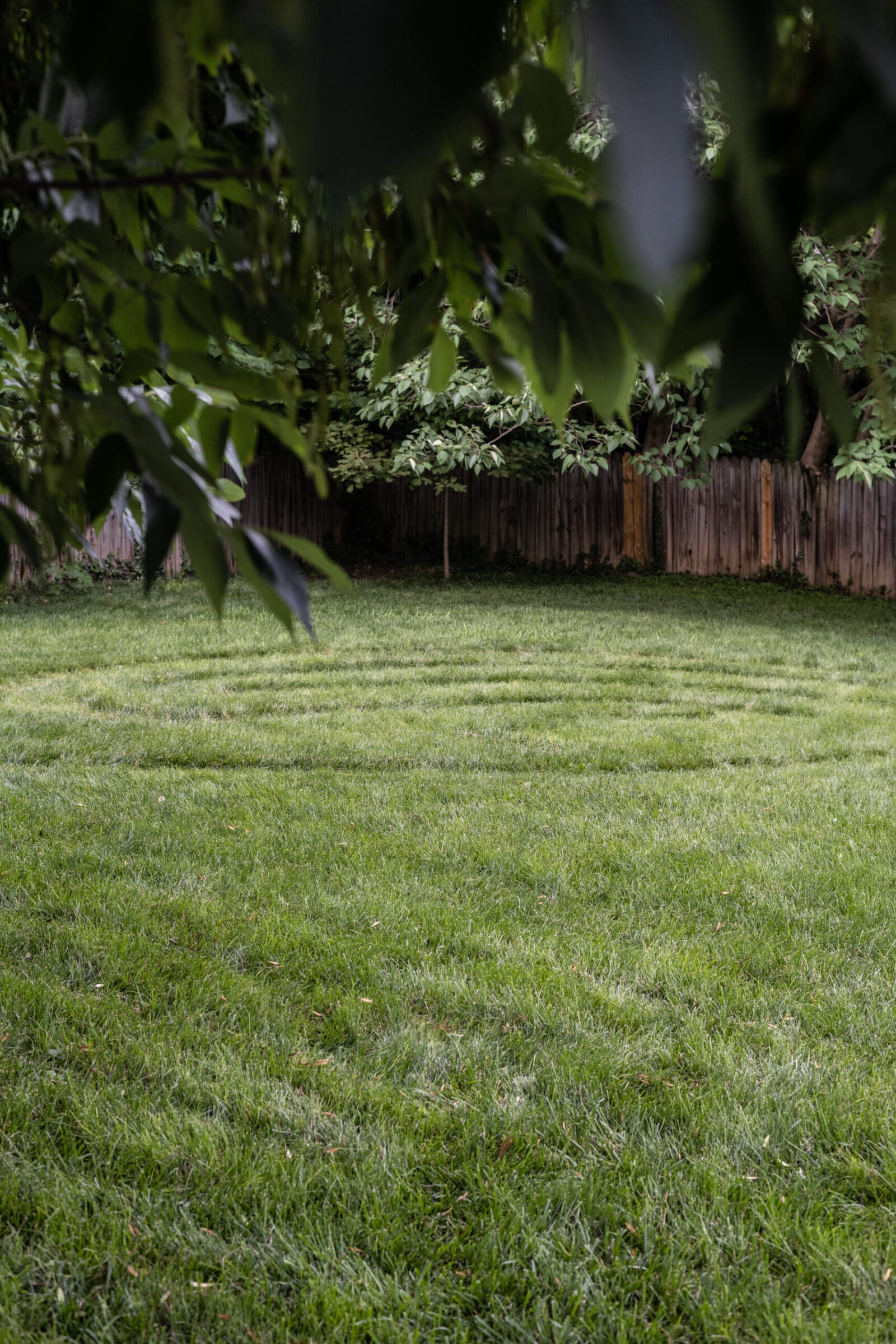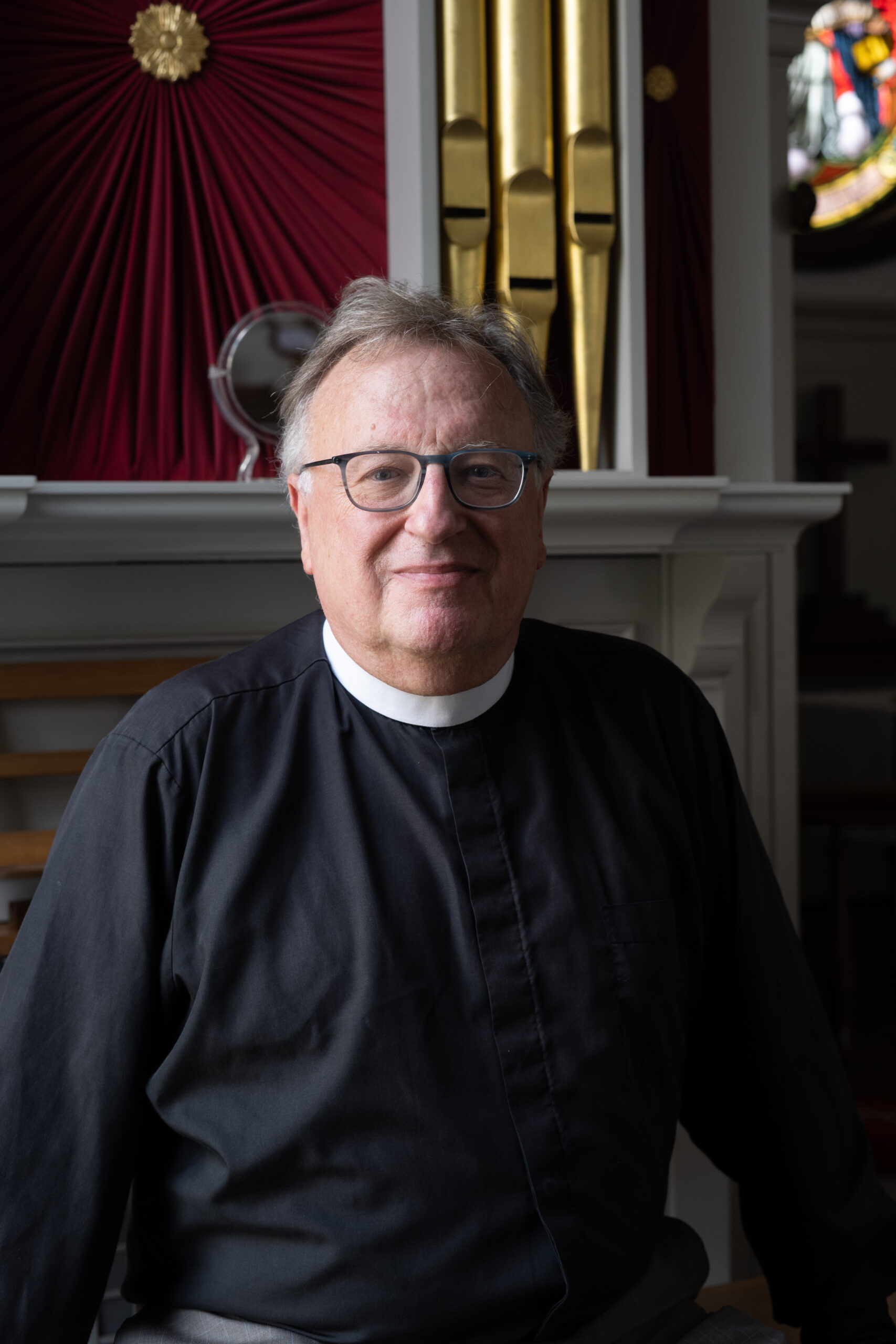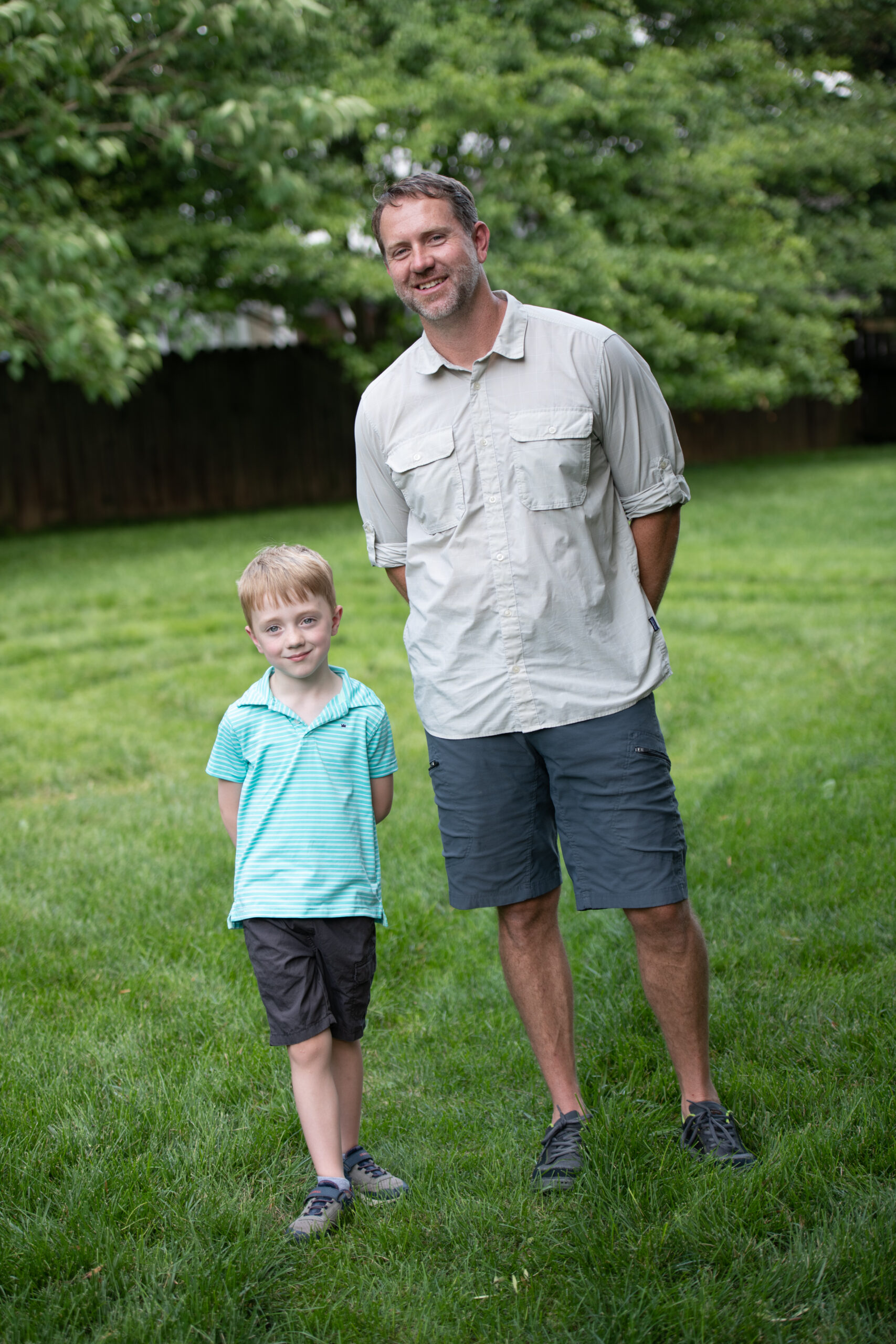In the Middle of the Middleburg Labyrinth

Written by Bill Kent
Photos by Michael Butcher
A few weeks ago, on a day too nice to stay indoors, Lee Leidenheimer was out for a stroll on Federal Street when she saw what appeared to be an overgrown lawn.
A relationship banker at Truist’s Middleburg branch, Leidenheimer had a few minutes left on her lunch break. She took a closer look at the grassy enclosure behind the parish house of Emmanuel’s Episcopal Church. “I had never seen anything like it, but there was something familiar about it — like a kid’s marble game,” she remembers.
She entered the enclosure, found a path on the grass, followed the twists and turns, and arrived at the center of the pattern “with this perfect sense of peace and calm.”

She went back to the bank and called the Reverend Eugene “Rector Gene” LeCouteur. Though not a member of Emmanuel Episcopal, she had known LeCouteur for several years because both were on the board of the Seven Loaves Food Pantry.
“I told him whatever it was he had out there, it was wonderful,” Leidenheimer remembers.
LeCouteur explained that she had walked Middleburg’s first and only labyrinth. The relaxed, peaceful feeling that she got when she reached the center was one of the reasons the church installed it two years ago in what had been a playground.
Tamara Hayter, the Emmanuel Church member who originally came up with the idea, offers another reason: “It’s just really, really cool!”
According to the Labyrinth Locator, an internet search engine produced by the non-profit organization Labyrinth Society, Middleburg’s labyrinth is the youngest of 135 labyrinths in the Commonwealth. Many are located on or adjacent to sites of religious worship and, like the one in town, are open to the public. Some are temporary structures that can be rented for parties and weddings. A few are in public parks or private gardens. Others are on the grounds of mental health clinics. One is inside a women’s correctional facility.
Over the last 25 years, psychologists and mental health professionals have promoted labyrinth-walking as a kind of moving meditation that can induce relaxation, reduce stress, and help with some forms of anxiety-related illnesses. Many religious institutions have installed labyrinths modeled on those in Europe’s medieval cathedrals.
This doesn’t surprise George Mason University Assistant Professor of Art History Heidi Gearhart, who specializes in European medieval art. “People think of the Middle Ages as being a time of heavy spirituality and violence and not much else, but there actually was a sophisticated understanding of the links between the physical and the spiritual,” Professor Gearhart explains. “In this way, walking a labyrinth as a physical activity would also be contemplative, and both of these would help physical and mental health.”
Hayter urged Emmanuel Church to put one in after surfing the internet and seeing one on a front lawn. “I read that wounded war veterans would go through it and feel better. I thought it was so cool just to have something like that for people who might need it,” Hayter says.
Then, while on vacation in Hawaii, Hayter found a labyrinth in a church parking lot. “I had to wait until the cars left. Then I walked it and it felt good. It makes you focus on where you’re going. There’s nothing really difficult about it. You’re walking it by choice. You can leave the path at any time. It’s not for everybody.”

But, for those who find it at the right time, it can make a difference. “I walked a labyrinth a few times when I was in seminary,” LeCouteur recalls. “What it does for you is a personal thing.”
Middleburg’s labyrinth, among the other 6,000 or so in the world, should not be confused with Halloween corn mazes or even the famous hedge maze at London’s Hampton Court Palace. A maze seeks to confuse with branching paths that can take you to dead ends.
A labyrinth, on the other hand, is “unicursal.” Though the path may twist, curve, and curl around, there are no tricks or wrong choices. There is only one way in and one way out.
“It’s like a pilgrimage,” LeCouteur adds. “As you go in, you’re shedding worldly concerns, letting go of stuff, learning to trust that you’ll reach the center.”
What happens in the center varies. “I like to say the center is a place of reception. You can say: ‘What does God have for me today?’ Or you can ask yourself: ‘What can I do to make things a little bit better?’”
Leaving the labyrinth “is about integrating what you have received into your daily life,” LeCouteur concludes.
Though no one at Emmanuel Episcopal objected to Tamara Hayter’s idea of a labyrinth, it took a while for it to find its current home. The church first put a mowed labyrinth in an open area within the cemetery. “That didn’t work out,” LeCouteur says, “because the setting was a little daunting and somebody who didn’t know what it was mowed it all down.”
At the beginning of the pandemic, the labyrinth was then moved to what had been a children’s playground, painted on the grass. “But it became hard to see as the grass grew, so we just decided to keep the pattern mowed,” LeCouteur says.
The timing couldn’t have been better: The pandemic was just beginning. The labyrinth became a quiet place for the community to find a sense of peace and purpose.
LeCouteur doesn’t know precisely how many have visited the labyrinth. He can see it from his study but he does not usually go out and meet those who walk it.
One day he saw a father and son playing in it. James Powell had just moved to Middleburg and had gone for a walk with his five-year-old son, Wes. “Wes was intrigued by it…So, I explained it as best I could,” Powell says. A teacher and former high school administrator, Powell used to lead student trips to Europe. Among his favorite places was France’s Chartres Cathedral which is the site of the world’s most famous medieval labyrinth. “I told Wes that it’s not a straight line but you’ll get there. You have to trust yourself.” ML
This article first appeared in the July 2022 Issue








